

In the “Creation and Growth” section of the second exhibition hall of the China Aviation Industry History Museum, there is a restored model of the 104A computer and a miniature model of the 104A computer room. Compared to today’s computers, the 104A appears somewhat bulky. However, 52 years ago, this computer located in the 104A building of the Aviation Industry Computing Institute guided China’s first artificial Earth satellite, “Dongfanghong-1”, along its pre-calculated orbit while playing the song “Dongfanghong”.
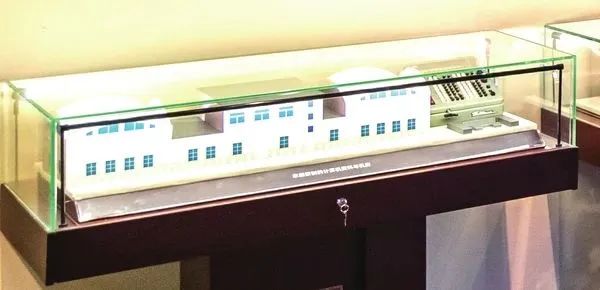

104A
The 104A computer room still exists in the Taibai campus of the Computing Institute. The computer room is built in a “thin-shell” style, covering an area of 143 square meters, with a simple structure (no columns), safe and sturdy, characterized by a large span, minimal materials, and low costs. The restored model of the 104A computer room on display at the aviation history museum measures 800mm×25mm×16mm, with four columns on the southern wall. The left side (east room) is the control room for the electronic computer, where researchers input and control computational tasks; the right side (west room) is the vacuum tube room, which is the core area for computer calculations.
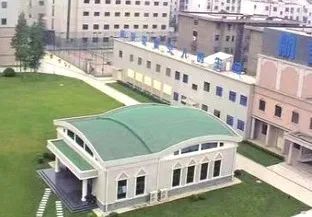
Current aerial view of the 104A computer room
During the 60th anniversary celebration of the Computing Institute, many veterans who participated in the development of the 104A stood in front of the computer room, with many moved to tears.
“This is my battlefield, and I miss my comrades. Because when I was young, I contributed my efforts and sweat to it.” Returning to the old place, they were all very excited when talking about the day the 104A was successfully tested.
Speaking of the 104A, the glorious years have never faded. These university students of the new China learned, built, and developed, using their hands to successfully test the large electronic computer 104A.
The 104A computer was developed in 1965 by the Xi’an Computing Institute of the Chinese Academy of Sciences (now the Aviation Industry Computing Institute). It was the first large electronic tube computer developed entirely with domestic components in China and is a typical model of the first generation of digital computers, with an average calculation speed of 10,000 operations per second, capable of replacing the computational power of tens of thousands of people at that time.
On April 7, 1965, the front page of the “Shaanxi Daily” reported: “Xi’an scientific departments promote self-reliance spirit, successfully test large electronic computer.”
At the beginning of the founding of New China, the country introduced a 103 computer and a 104 computer, managed and used by the eighth research room of the Beijing Computing Institute.
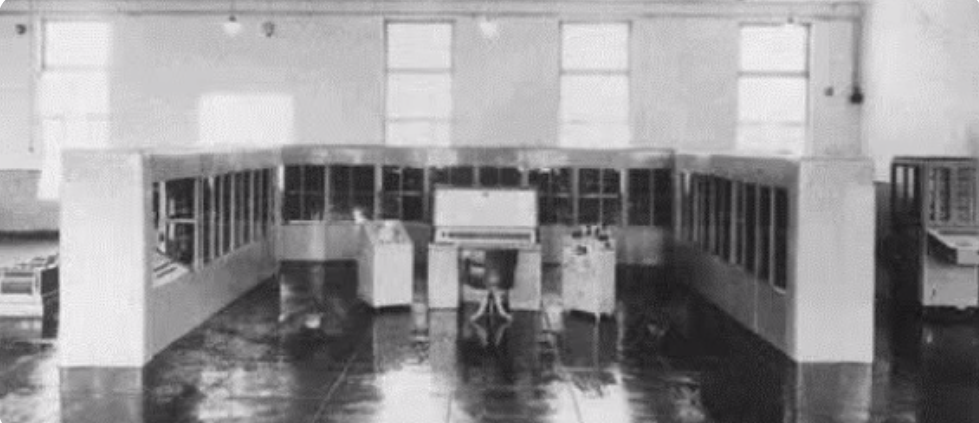
104 Computer
In 1958, the “Two Bombs and One Satellite” project was officially approved. With a call from the state, 14 aspiring young people rushed from all over the country to Xi’an to form the Xi’an Computing Institute. The first research task of the institute was to design and develop a domestically produced large computer, the 104A, for the “Two Bombs and One Satellite” project.
The “A” in 104A signifies the first series of the Soviet 104 computer fully localized. The 104A project was undertaken by the Xi’an Computing Institute, which was the foundation of the institute’s establishment and development.
The start of the 104A project was exceptionally difficult. In July 1960, the Soviet experts withdrew. At that time, all the reference materials for developing the 104A were in Russian, making it difficult for researchers to self-study, as there were no Chinese computer textbooks available in schools. They had to rely on themselves, learning and digesting bit by bit.
At that time, the computing institute was impoverished and bare, and a popular saying vividly depicted the situation: “From a distance, the Academy of Sciences looks like a pigsty; up close, it looks like a pigpen; the weeds are taller than people, and you need a boat to get in.”
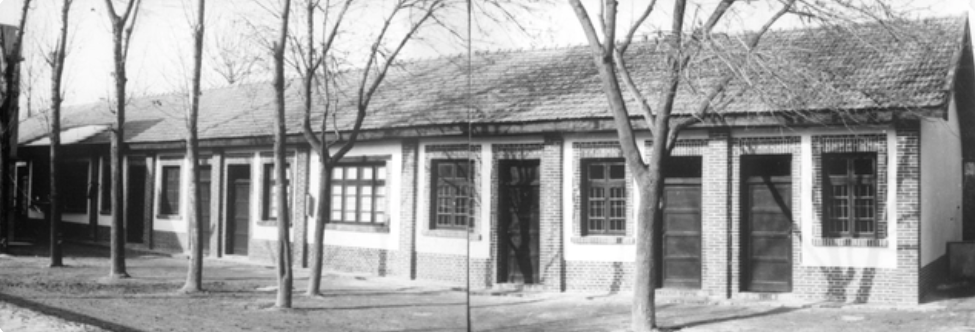
Old workshop of the Xi’an Computing Institute
Even so, in such an extremely harsh environment, the people of the computing institute learned, built, and developed while pushing forward the work of the 104A with a fighting spirit. They built their own computer room without one, and they built their own workshop for parts processing! They set up tents as workshops and used bed boards as workbenches. In their spare time, everyone voluntarily participated in infrastructure construction, digging pits, and filling the foundation with soil, creating a bustling scene. The workshop was established, and the 104A computer room took shape.
Since the 104A machine is a large and complex system, two air-conditioned buildings were specially built as computer rooms. The entire system consists of 22 large cabinets, with 11 racks for control and operation. The mainframe and motor alone occupy over 200 square meters each. The entire machine uses 4,200 electronic tubes and 4,000 crystal diodes. The power supply cables also run underground to reach each cabinet.
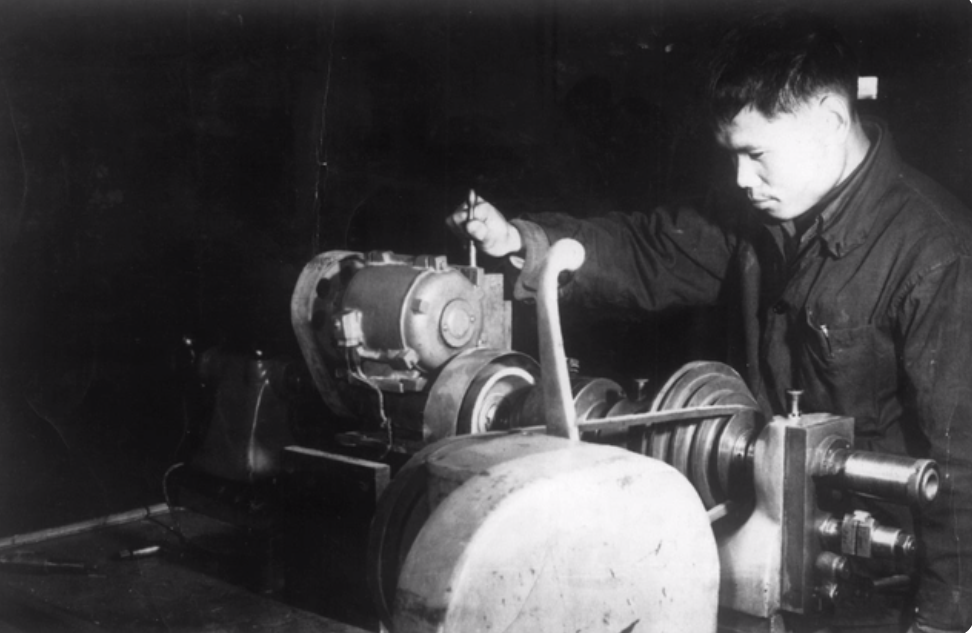
Staff are debugging
Thus, several specialized groups were formed around the 104A. An Jianxun, Cao Yushen, Guo Zhenhuan, and Liu Tinghua, who were transferred from the Beijing Computing Institute and had participated in the assembly and debugging of the Beijing 104 machine, took on key parts. Others went to Beijing for further studies, went to Shanghai for training, attended classes at universities, and self-studied at the institute, discussing and improving together. Many people who previously learned basic arithmetic now digested concepts like “pulses, triodes, transistors, and instruction flow”.
Through hardship, success was achieved. In 1963, the 104A machine entered the stage of overall debugging. In November of the same year, at the third national conference on computers and computational mathematics hosted by the computing institute, the institute introduced the production and debugging status of the 104A to the attending leaders, experts, and scholars. At the conference, everyone unanimously affirmed the achievements of the computing institute.
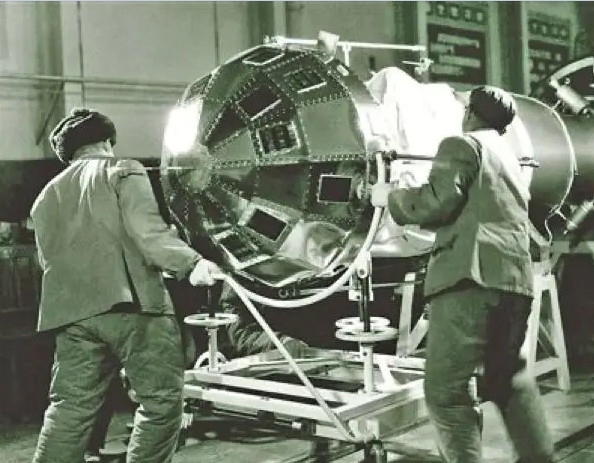
China’s first artificial Earth satellite, “Dongfanghong-1”
All personnel at the computing institute safeguarded the 104A, and everything was done for the 104A. In April 1965, the 104A machine was completed. On April 24, 1970, China’s first artificial Earth satellite, “Dongfanghong-1”, was successfully launched. The satellite accurately traveled along the orbit pre-calculated by the 104A computer, playing the same-named song as it soared through space.
After successfully supporting the “Two Bombs and One Satellite” mission, the 104A also completed important engineering calculations such as the stress calculations for the salt pot gorge power station’s spiral casing and dam, making the Xi’an Computing Institute the computational center for Northwest and Southwest China.
The 104A machine is a typical representation of the Chinese people’s hard work, self-reliance, and independent development of domestic computers. On April 20, 1972, the entire 104A machine was relocated to a unit in Hangzhou for teaching and practice, leaving only the computer room ruins in the Taibai campus, with the west room preserved by generations of computing institute personnel, holding profound significance.
Today, the 104A computer room has become a cultural heritage of the computing institute, included in the cultural research and visit projects for new employees and open days. The value of its red resources will continue to be explored and innovatively utilized, leading the people of the computing institute to take on the mission of serving the country through aviation and strengthening the nation, continuously contributing wisdom and strength to solidify cultural confidence in models and carry on the red bloodline.
Source | Aviation Industry Computing Institute
Editor | Gao Yinhé
Chief Editor | Guo Meichen Supervisor | Liu Wenbo
